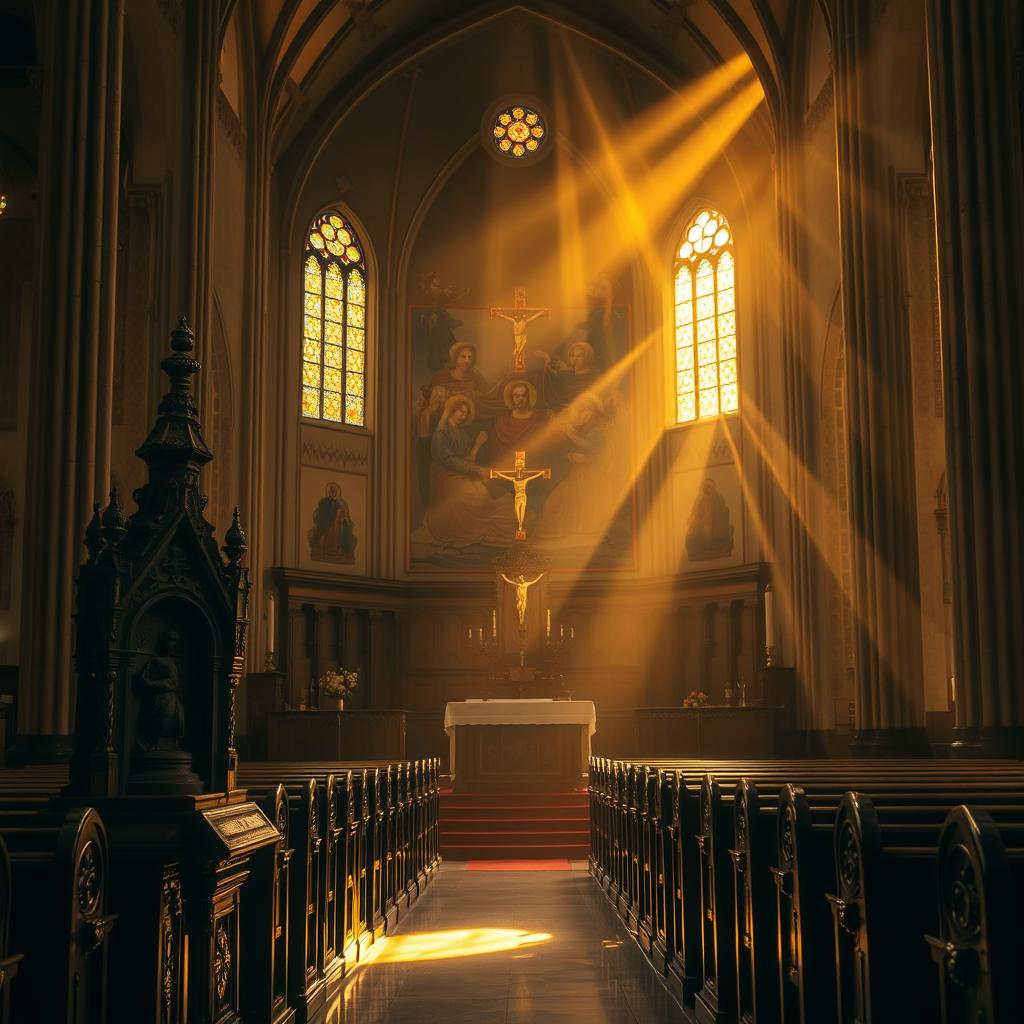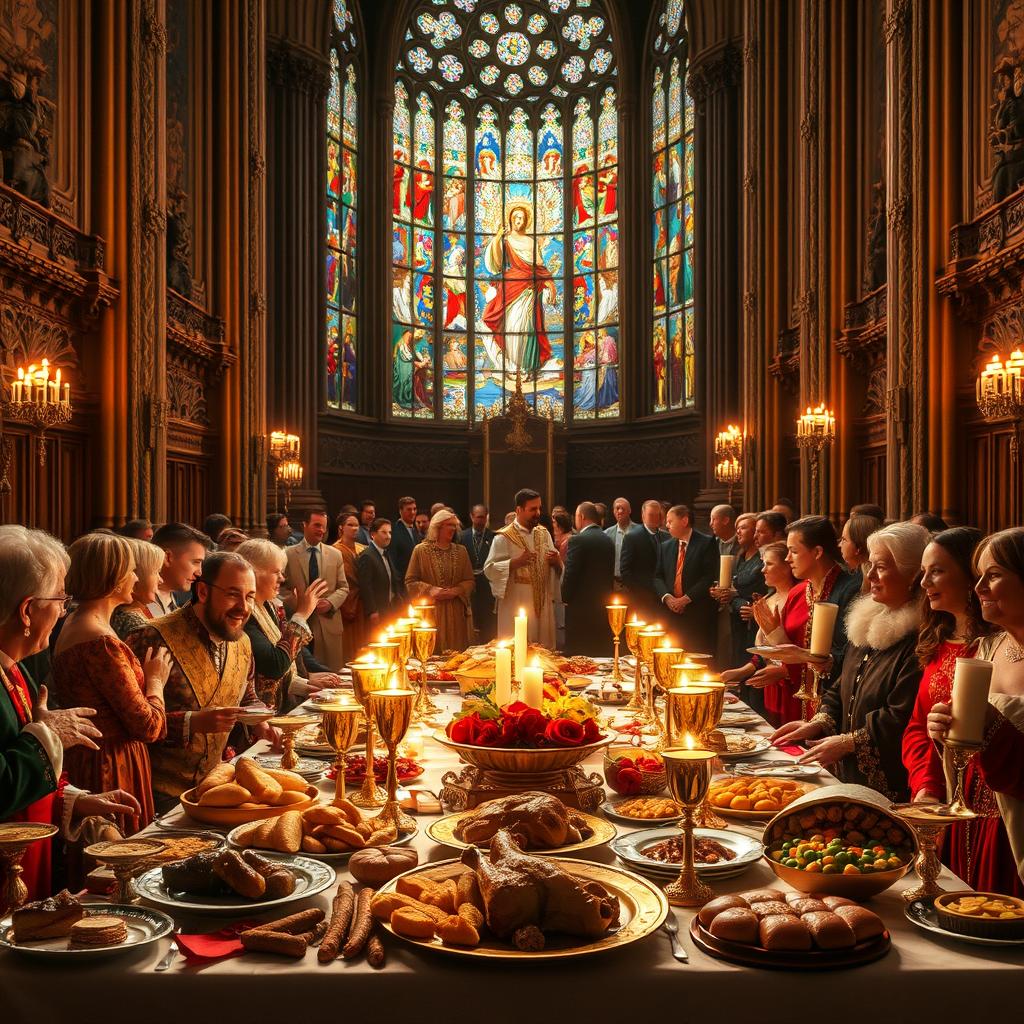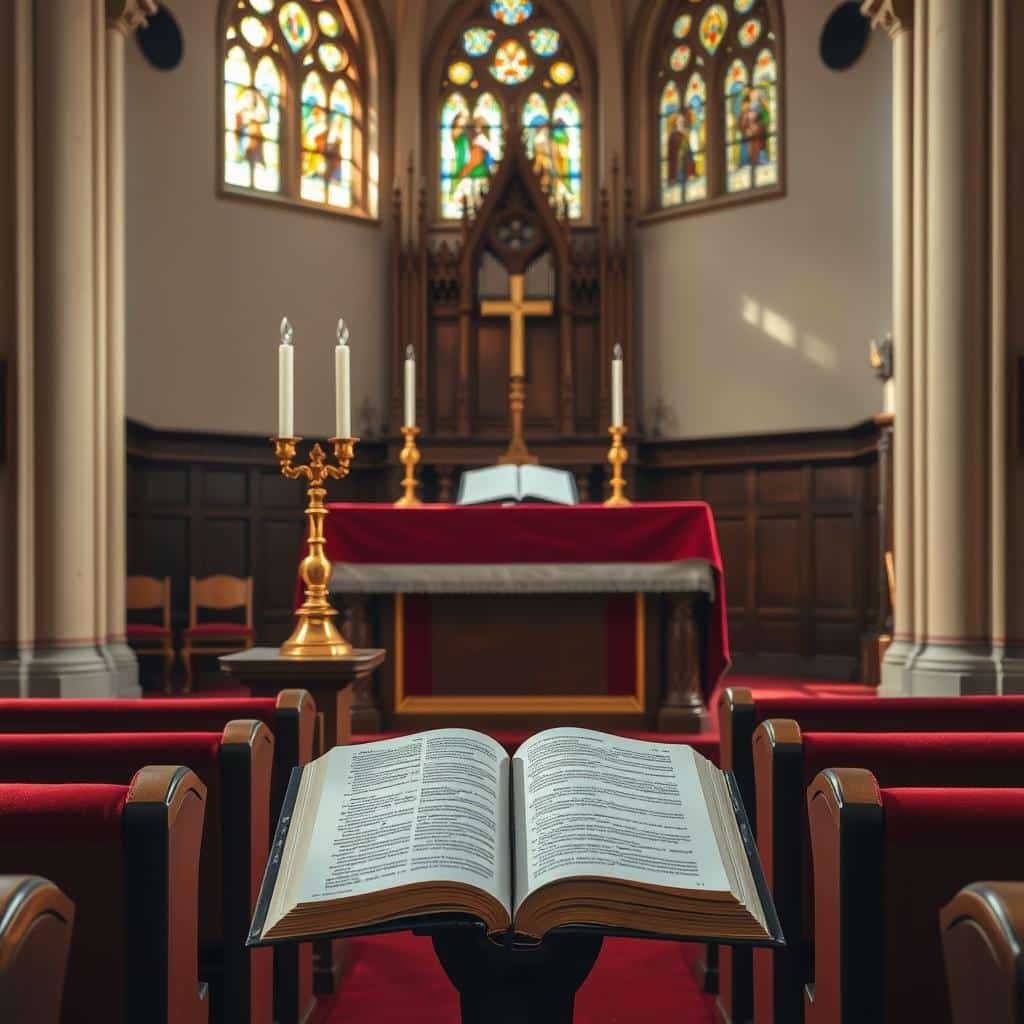The Twenty-first Sunday in Ordinary Time, Cycle C focuses on faith and perseverance. This Sunday’s readings offer deep insights into our bond with God. They help us understand our journey better.
The assigned readings include Isaiah 66:18-21, Psalm 117:1,2, Hebrews 12:5-7,11-13, and Luke 13:22-30. These texts encourage us to grasp the essence of faith in our daily lives.
Reflecting on these readings, we learn about the ups and downs of faith. We find motivation in the examples and teachings given to us.
The Liturgical Context of the Twenty-first Sunday in Ordinary Time
As we get closer to the Twenty-first Sunday in Ordinary Time, it’s key to grasp its liturgical setting. The liturgical calendar leads us through different seasons. Ordinary Time is a big part of our spiritual path.
Ordinary Time isn’t called “ordinary” because it’s unimportant. It’s a time to delve into the everyday aspects of Christ’s life and teachings. The Twenty-first Sunday in Ordinary Time is special because of the gospel readings chosen for it.
The three-year cycle of readings lets us dive deep into the Gospels. In Cycle C, we focus on Luke’s Gospel. It gives us a fresh look at Jesus’s life and teachings. The readings from Luke during Ordinary Time show Jesus’s journey to Jerusalem and his teachings on faith and being a disciple.
Knowing the liturgical context makes our Sunday Mass experience richer. It shows us the ongoing and deep meaning of the scriptures all year. As we think about the gospel readings from Luke, we’re called to grow our faith and follow Jesus’s teachings more closely.
So, the Twenty-first Sunday in Ordinary Time is more than just another day. It’s a chance to think about our spiritual journey and the call to be a disciple in our everyday lives.
Twenty-first Sunday in Ordinary Time, Cycle C: Themes and Overview
The readings for the Twenty-first Sunday in Ordinary Time, Cycle C, tell a story of God’s call to all people. This Sunday’s texts weave together to guide us on our spiritual path.
The assigned readings are Isaiah 66:18-21, Psalm 117:1-2, Hebrews 12:5-7, 11-13, and Luke 13:22-30. Each passage helps us understand God’s plan for us. They highlight the value of faith, staying strong, and seeking what is right.
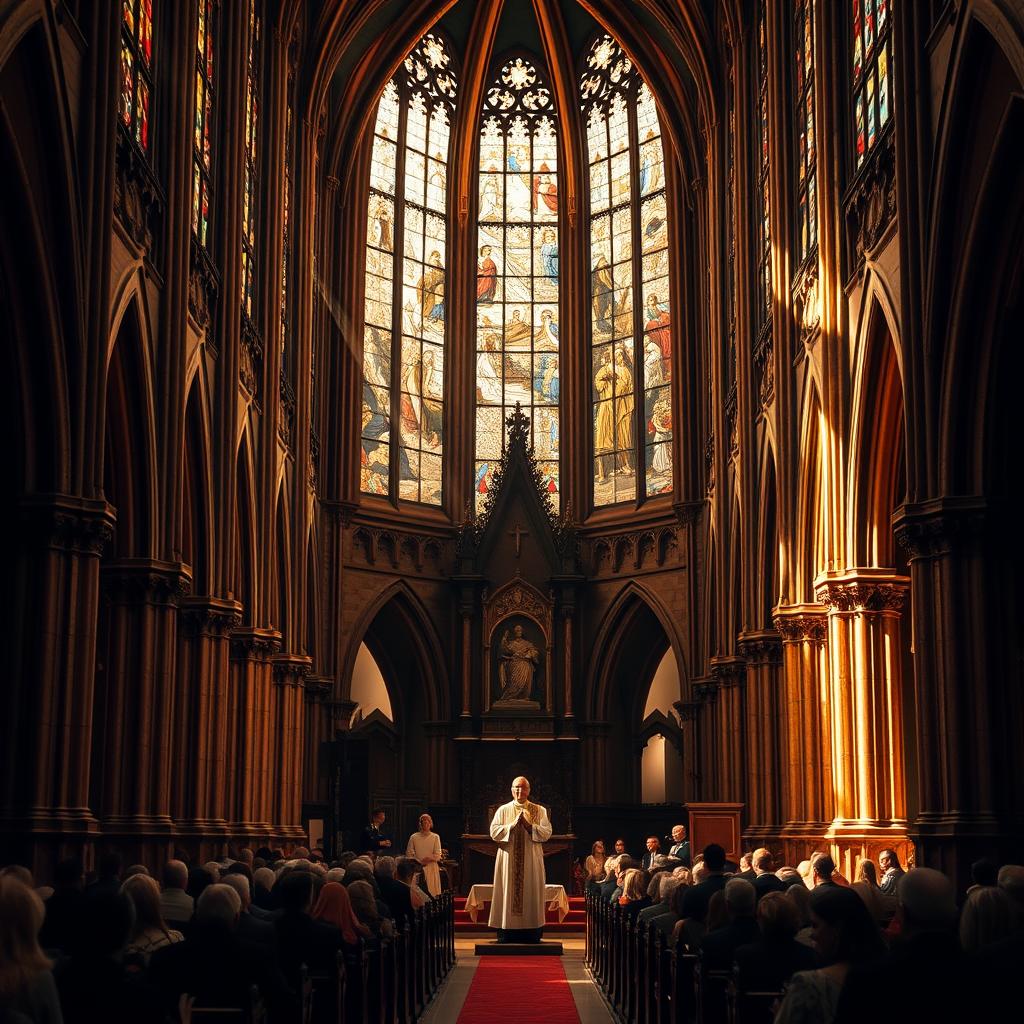
The Unifying Message Across All Readings
The readings for this Sunday share a key message: the call to faith and perseverance. Isaiah talks about God’s call to all nations, not just the Israelites. This idea is also in Psalm 117, which invites everyone to praise God for His mercy.
The Hebrews reading talks about the value of facing challenges. It says these trials help us grow spiritually. The Gospel from Luke tells us to work hard to reach our goal, showing the importance of dedication.
These readings give us a strong message. They tell us to stay true to our faith and see challenges as chances to grow. They are a great source of reflection and inspiration for a catholic homily.
First Reading: Isaiah 66:18-21 – God’s Universal Call
The prophecy of Isaiah 66:18-21 shows God’s call to people from all over the world. This part of the Book of Isaiah is full of prophetic messages and images.

Historical Context of Isaiah’s Prophecy
Isaiah spoke during a time of turmoil in ancient Israel. The late 8th century BCE was when the Book of Isaiah was written. It was a time of exile and hope for the Israelites.
Isaiah’s words were about hope and restoration. He reminded the Israelites of God’s promise to them.
The Sign Among the Nations
Isaiah 66:18-21 talks about a “sign among the nations.” This sign shows God’s presence and power to everyone. It means the Israelites will be gathered, and foreigners will join God’s people.
- The sign is like a beacon, calling people to worship the true God.
- It marks a new time of divine revelation and salvation for all, not just Israel.
- This call shows God’s rule over all nations.
Thinking about Isaiah 66:18-21 reminds us of God’s big plan for humanity. It tells us to see our faith as a source of hope and guidance for everyone.
This passage is great for sermon reflections. It talks about Israel’s restoration and the inclusion of the Gentiles in God’s plan. It makes us think about how our faith affects the world and our place in God’s story of love and salvation.
Theological Implications of Isaiah’s Vision
Isaiah’s vision shows a God who wants everyone to be part of His plan. This is seen in Isaiah 66:18-21. It challenges old ideas that often separate religious groups.
Isaiah’s prophecy talks about a kingdom that welcomes everyone, no matter their background. This idea is key for the church service. It’s where people come together to worship and think about their faith.

The message of God’s kingdom, as Isaiah said, changes how we see our role in the world. It means our mission is not just for ourselves. It’s about reaching out to everyone.
| Aspect | Traditional Understanding | Isaiah’s Vision |
|---|---|---|
| Community Boundaries | Defined by cultural and religious norms | Universal, inclusive of all people |
| Church Service Focus | Primarily serving the community’s needs | Embracing a universal mission |
By following Isaiah’s vision, we need to think about our actions. We should make sure they match the message of inclusion. This might mean changing how we hold church service to welcome more people.
This way, we not only understand God’s call better. We also become a more lively and welcoming place for everyone.
Responsorial Psalm: Psalm 117:1,2 – The Universal Praise
Psalm 117 is short but full of deep meaning. It invites everyone to praise God’s love and faithfulness. This psalm is a strong call to worship together, showing God’s constant kindness and faithfulness.
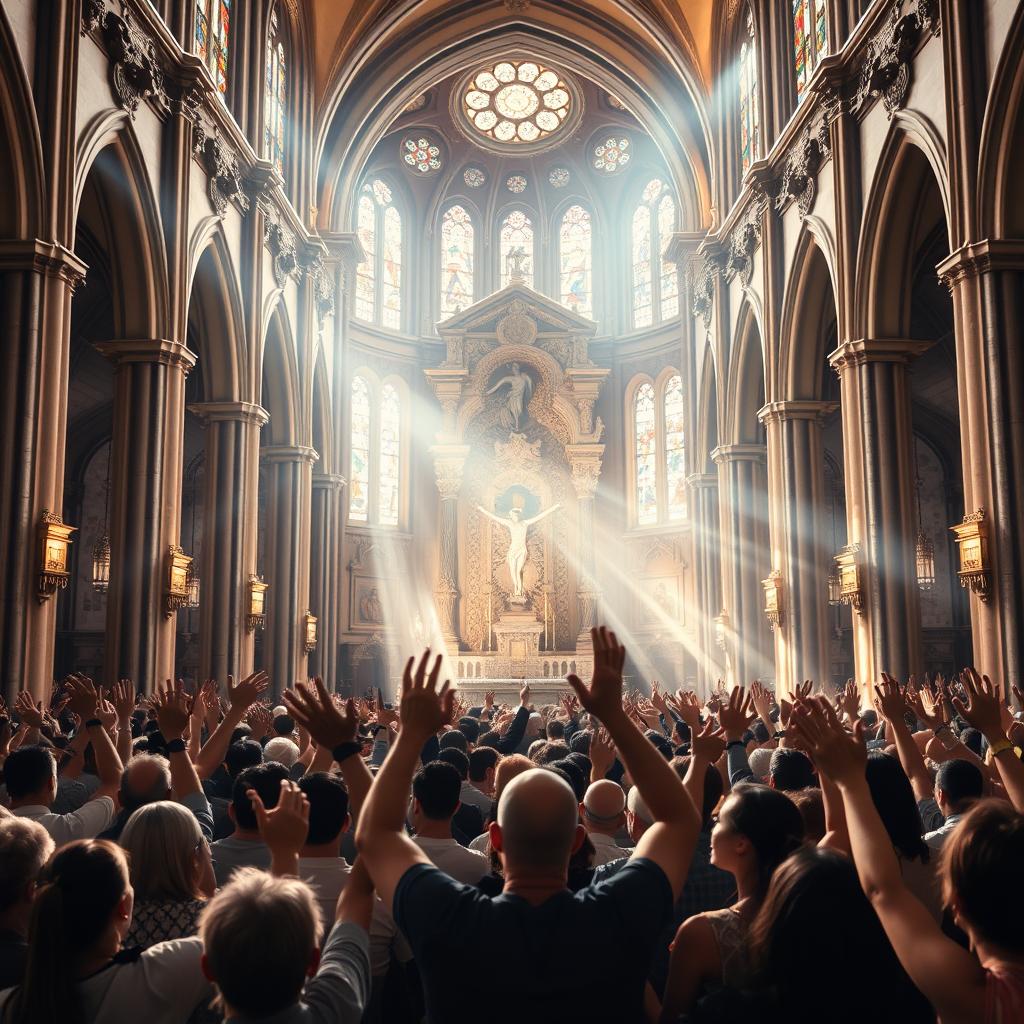
The psalm asks everyone to praise, not just the Israelites. It shows a dream of salvation for all. This idea fits well with the Twenty-first Sunday in Ordinary Time, Cycle C, which talks about God’s call to faith devotion.
Structure and Significance of the Shortest Psalm
Psalm 117 has only two verses, making it the shortest in the Psalter. Yet, it covers important topics like praise and thanksgiving. Its simple structure calls on all nations to praise God in the first verse. The second verse explains why: God’s kindness and faithfulness.
This psalm is special because it speaks to everyone. It goes beyond just one group, inviting all to worship the one true God. This message fits perfectly with the Twenty-first Sunday in Ordinary Time, Cycle C, highlighting the importance of faith devotion.
Second Reading: Hebrews 12:5-7,11-13 – Divine Discipline
This twenty-first Sunday in Ordinary Time, Cycle C, invites us to think about God’s discipline. The passage in Hebrews 12:5-7, 11-13 shows God’s discipline as a sign of love. It helps us grow closer to Him.
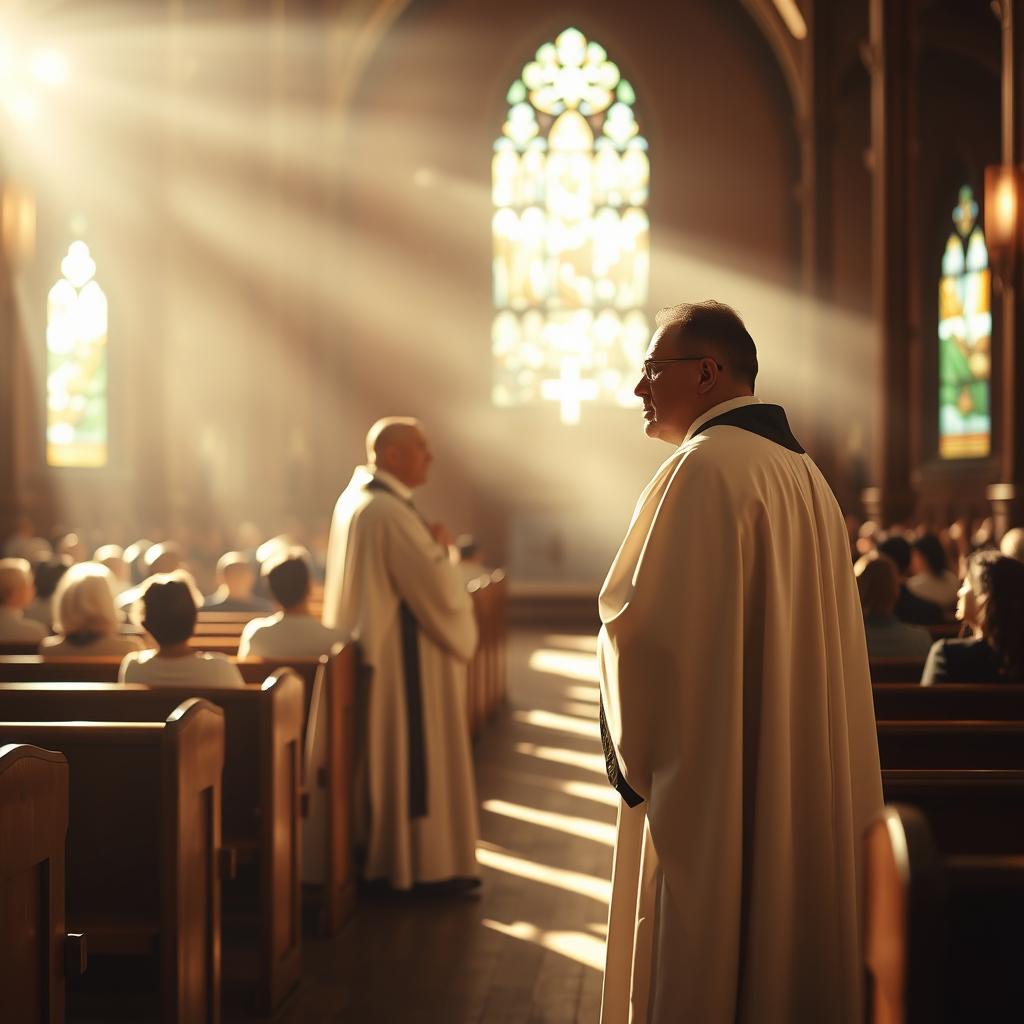
The Context and Audience of Hebrews
The Epistle to the Hebrews was written to a community facing hard times. They were thinking about going back to old ways. The author wanted to strengthen their faith by showing Christ’s greatness and the new covenant.
The Metaphor of Parent and Child
The text uses a parent-child metaphor to explain God’s relationship with us. Just like a parent disciplines a child for their good, God does the same. This shows God’s discipline is loving and aimed at our growth.
“My son, do not make light of the Lord’s discipline, and do not lose heart when he rebukes you; because the Lord disciplines those he loves, and he punishes everyone he accepts as a son.”
This scripture tells us God’s discipline is a sign of His love, not abandonment. It urges us to see challenges as chances to grow and become holy.
| Aspect of Divine Discipline | Parental Discipline | Spiritual Significance |
|---|---|---|
| Correction | A parent corrects a child to teach right behavior. | God corrects us to guide us towards righteousness. |
| Purpose | To help the child learn and grow. | To sanctify and mature us in faith. |
| Expression of Love | A sign of a parent’s love and investment in the child’s future. | A demonstration of God’s love, showing He values our spiritual growth. |
Reflecting on Hebrews 12:5-7, 11-13, we see God’s discipline as a formative force. It shapes us into the people God wants us to be. It calls us to deeper trust and obedience.
Embracing Life’s Challenges as Spiritual Training
The readings for the Twenty-first Sunday in Ordinary Time, Cycle C, teach us to see our struggles as chances for spiritual growth. This view is key as we move through the liturgical calendar. It helps us find meaning and grow in our faith.
In the Second Reading, Hebrews 12:5-7, 11-13, we learn that God’s discipline shows His love, like a parent’s correction. This scripture tells us to face challenges, seeing them as essential parts of our spiritual growth.

By choosing this mindset, believers can turn their hardships into opportunities for growth. This change takes a conscious choice to trust in God’s plan. It means seeing beyond the immediate troubles.
| Aspect | Challenge | Spiritual Growth |
|---|---|---|
| Perspective | Viewing challenges as obstacles | Seeing challenges as opportunities |
| Response | Reacting with frustration or despair | Responding with faith and resilience |
| Outcome | Stagnation or spiritual regression | Spiritual strengthening and maturity |
As we move through Cycle C of the liturgical calendar, let’s grasp the scripture’s message. Our challenges are not random events but key to our spiritual training. They shape us into the people God wants us to be.
In conclusion, the Twenty-first Sunday in Ordinary Time, Cycle C, reminds us of the value of facing life’s challenges as spiritual discipline. By doing this, we not only deepen our faith but also become stronger when facing hard times.
Gospel Reading: Luke 13:22-30 – The Narrow Gate
The Gospel reading from Luke 13:22-30 is a key moment in Jesus’s journey to Jerusalem. It highlights the need to enter through the narrow gate. This message is crucial, both for its teachings and its place in Jesus’s journey.
Jesus’s Journey Toward Jerusalem
Jesus’s journey to Jerusalem is a big theme in the Gospel of Luke. It shows His determination and commitment to His mission. Along the way, He teaches about God’s kingdom and what it takes to enter it.
In Luke 13:22-30, Jesus is asked about who will be saved. Instead of a simple answer, He talks about the narrow gate. He says salvation needs effort and dedication. This teaching challenges His listeners to think about their spiritual state.
Jesus’s Challenging Response
Jesus’s answer to the question about salvation is both challenging and thought-provoking. He says, “Strive to enter through the narrow door, for many, I tell you, will try to enter but will not be able.” This shows the importance of perseverance and spiritual vigilance.
The narrow gate is a powerful metaphor for Jesus. It shows the need for a real and dedicated faith. It’s not just about being in a crowd, but about choosing to follow God’s path.
Some key points from Jesus’s teaching on the narrow gate include:
- The need to strive for salvation, showing it’s not passive.
- The contrast between the narrow gate and the wide gate, representing two paths.
- The warning that many will try but fail, emphasizing the need for determination.

By looking at Jesus’s teaching on the narrow gate, believers can reflect on their spiritual journey. This Gospel reading reminds us of the importance of living a life of faith and seeking salvation.
The Spiritual Meaning of the Narrow Gate
The narrow gate, as Jesus described it, is a deep choice for believers. It’s not just about entering a gate. It’s about starting a journey that needs dedication, hard work, and a strong will to grow spiritually.
In sermon reflections, the narrow gate is a strong symbol for the Christian life. It makes believers think about their values, what’s important to them, and the real cost of following Jesus. The gate is narrow because it asks for a strong and steady commitment to Jesus.

In a church service, the message of the narrow gate can really inspire people. It makes them think about their faith more deeply. It asks them to consider what it means to live a righteous life and how it affects their everyday life.
| Characteristics of the Narrow Gate | Implications for Believers |
|---|---|
| Requires dedication and perseverance | Encourages spiritual discipline and growth |
| Demands a focused commitment | Fosters a deeper relationship with God |
| Challenges worldly values and priorities | Leads to a more authentic expression of faith |
Understanding the spiritual meaning of the narrow gate can change a believer’s life. It calls them to live with purpose, to focus on growing spiritually, and to find strength in their faith community. As believers try to walk through the narrow gate, they learn that the journey is as important as the end goal.
In conclusion, the narrow gate is a powerful image that pushes believers to live a life of faith and commitment. It reminds them that following Jesus is a journey that needs effort, dedication, and a readiness to embrace spiritual discipline.
Reversal of Expectations in God’s Kingdom
The gospel message for the twenty-first Sunday in Ordinary Time asks us to have faith devotion beyond what we think. As we look at the readings for this day, we see a big change in how we think about God’s kingdom.
The readings show us that the last will be first and the first will be last. This idea is not new to Christianity. Yet, it’s still a hard and deep message. It makes us think about our priorities and what God’s plan is.

In the Gospel Reading: Luke 13:22-30, Jesus talks about the narrow gate to life. This part stresses the need to try hard to get through the narrow gate. Many will try, but not all will make it.
| Reading | Theme | Message |
|---|---|---|
| Isaiah 66:18-21 | God’s Universal Call | Salvation for all nations |
| Hebrews 12:5-7, 11-13 | Divine Discipline | Embracing life’s challenges as spiritual training |
| Luke 13:22-30 | The Narrow Gate | The call to enter through the narrow gate |
This change in expectations calls for humility and faith. It tells us that God’s ways are different from ours. As we go through the twenty-first Sunday in Ordinary Time, we’re asked to grow our faith devotion. We’re also asked to trust in God’s plan.
By accepting this change, we become open to the real meaning of being a disciple and finding salvation. It shows us that our view of God’s kingdom should be based on faith, not our own ideas.
Integrating the Readings: A Coherent Message for Today’s Faithful
The Twenty-first Sunday in Ordinary Time, Cycle C, brings a message of universal salvation. The readings from Isaiah, Psalm 117, Hebrews, and Luke tell a story of God’s call to all. They show that salvation is for everyone.
The first reading from Isaiah 66:18-21 talks about God knowing all nations. It says they will all come together to see God’s glory. This shows the universal scope of salvation.
Psalm 117:1-2 invites all nations to praise the Lord. It talks about God’s mercy and faithfulness.

The second reading from Hebrews 12:5-7, 11-13 talks about enduring discipline. It shows God’s love through it. The gospel reading from Luke 13:22-30 warns about the narrow gate. It tells us to live a life of faith and righteousness.
The Thread of Universal Salvation Across Readings
Looking closer, we see universal salvation in all readings. The table below shows how they all connect:
| Reading | Theme | Emphasis |
|---|---|---|
| Isaiah 66:18-21 | Universal Salvation | Gathering of Nations |
| Psalm 117:1-2 | Praise and Mercy | Universal Call to Praise |
| Hebrews 12:5-7, 11-13 | Divine Discipline | Call to Perseverance |
| Luke 13:22-30 | The Narrow Gate | Importance of Righteous Living |
This message asks us to have faith that is both personal and universal. It calls us to live our beliefs in a community of faith.
Practical Applications for Modern Believers
The Church guides us through readings to understand God’s will better. These texts help us reflect on our spiritual journey. They encourage us to face faith’s challenges with courage and perseverance.
The Twenty-first Sunday in Ordinary Time, Cycle C, teaches us about salvation and spiritual discipline. Reflecting on these scriptures helps us see where we can grow in faith and holiness.
Personal Spiritual Practices Inspired by the Readings
One key practice is embracing divine discipline. The Second Reading from Hebrews says, “the Lord disciplines those he loves.” This view can change how we see life’s challenges, as chances for growth, not just obstacles.
“For the moment, all discipline seems painful rather than pleasant, but later it yields the peaceful fruit of righteousness to those who have been trained by it.” – Hebrews 12:11
Living this way means being patient and trusting in God’s plan. It’s about learning from our experiences and becoming more compassionate and resilient.
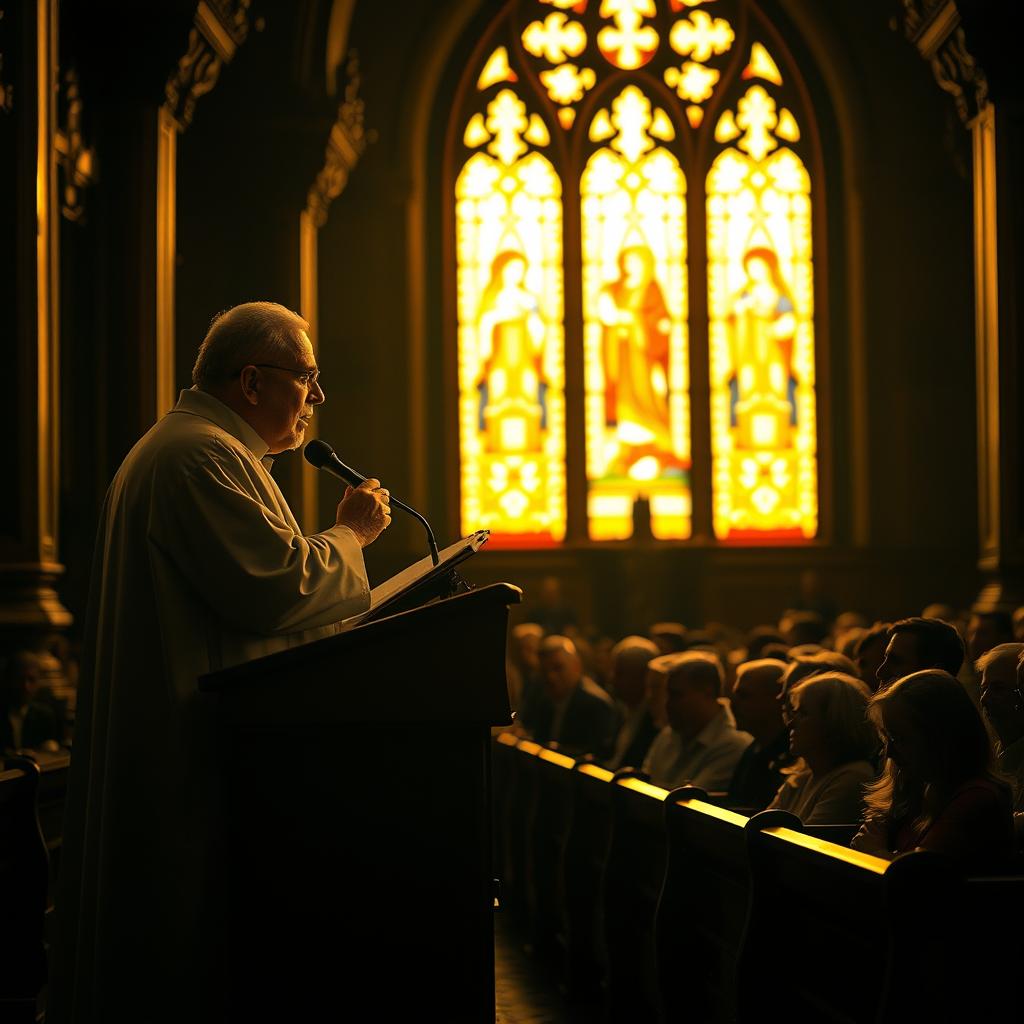
Another practice is practicing God’s presence in our daily lives. By being mindful of God’s presence, we can deepen our relationship with Him. This helps us make better decisions and actions.
| Spiritual Practice | Inspiration from Readings | Personal Application |
|---|---|---|
| Embracing Divine Discipline | Hebrews 12:5-7, 11-13 | Cultivate patience and trust in God’s providence |
| Practicing Presence of God | Luke 13:22-30 | Mindfulness in daily activities to deepen relationship with God |
| Striving through the Narrow Gate | Luke 13:22-30 | Prioritize spiritual growth and moral integrity |
Living these practices enriches our faith and strengthens the Church community. Together, we can build a more loving and supportive environment, showing God’s love and mercy.
Walking the Path of Faith: Beyond the Narrow Gate
Reflecting on the Twenty-first Sunday in Ordinary Time, Cycle C, reminds us of the importance of perseverance. The narrow gate in Luke’s Gospel is a symbol of the challenges we face. It shows us the hurdles we must overcome on our spiritual journey.
Attending church services and practicing faith devotion help us face these challenges. Isaiah and Hebrews’ teachings deepen our understanding of God’s call and the role of discipline in our lives.
When we face life’s challenges, we should see them as chances for growth. This way, we become stronger and more devoted. We walk the path of faith with renewed purpose and conviction.
Escape the Cycle of Reincarnation: Your Guide
